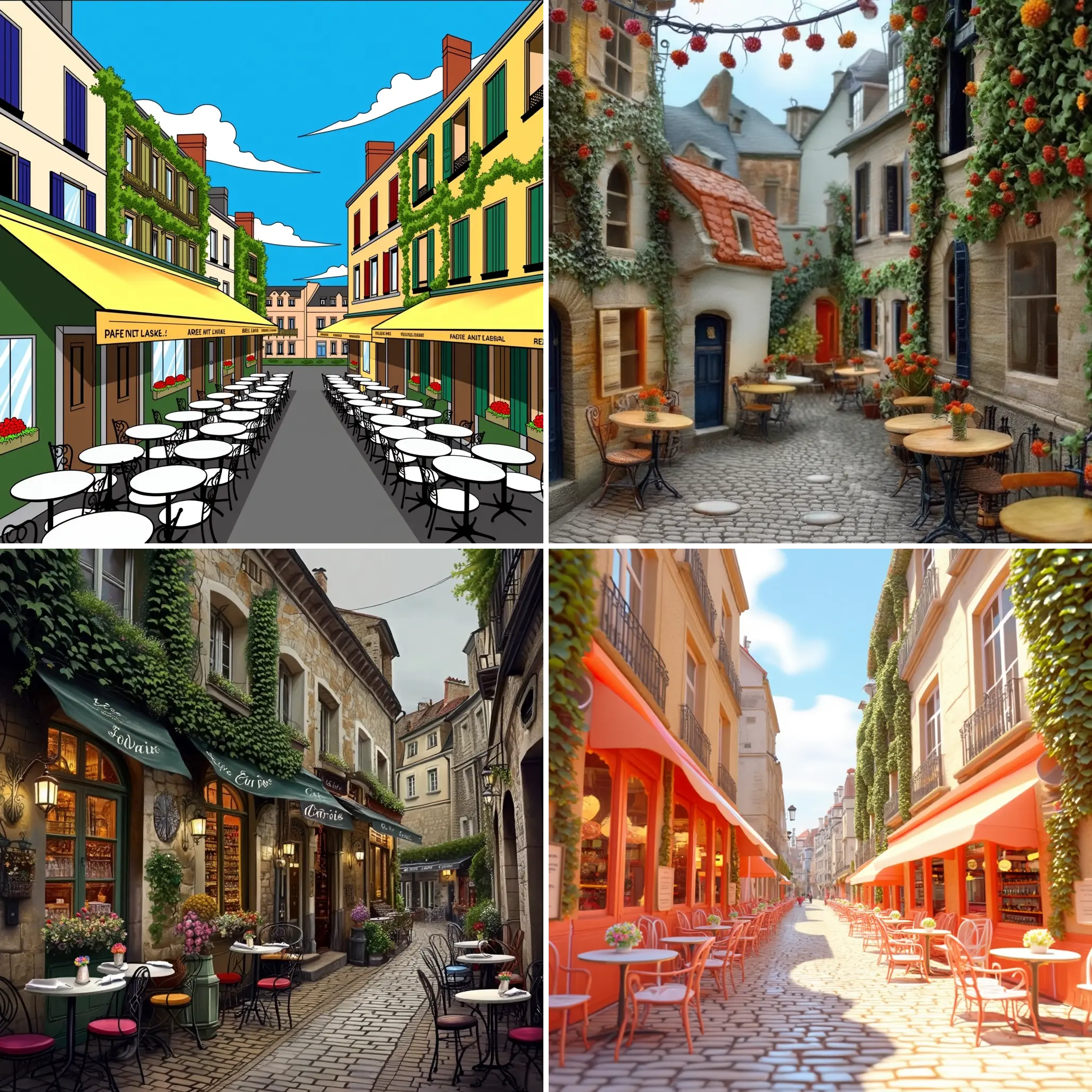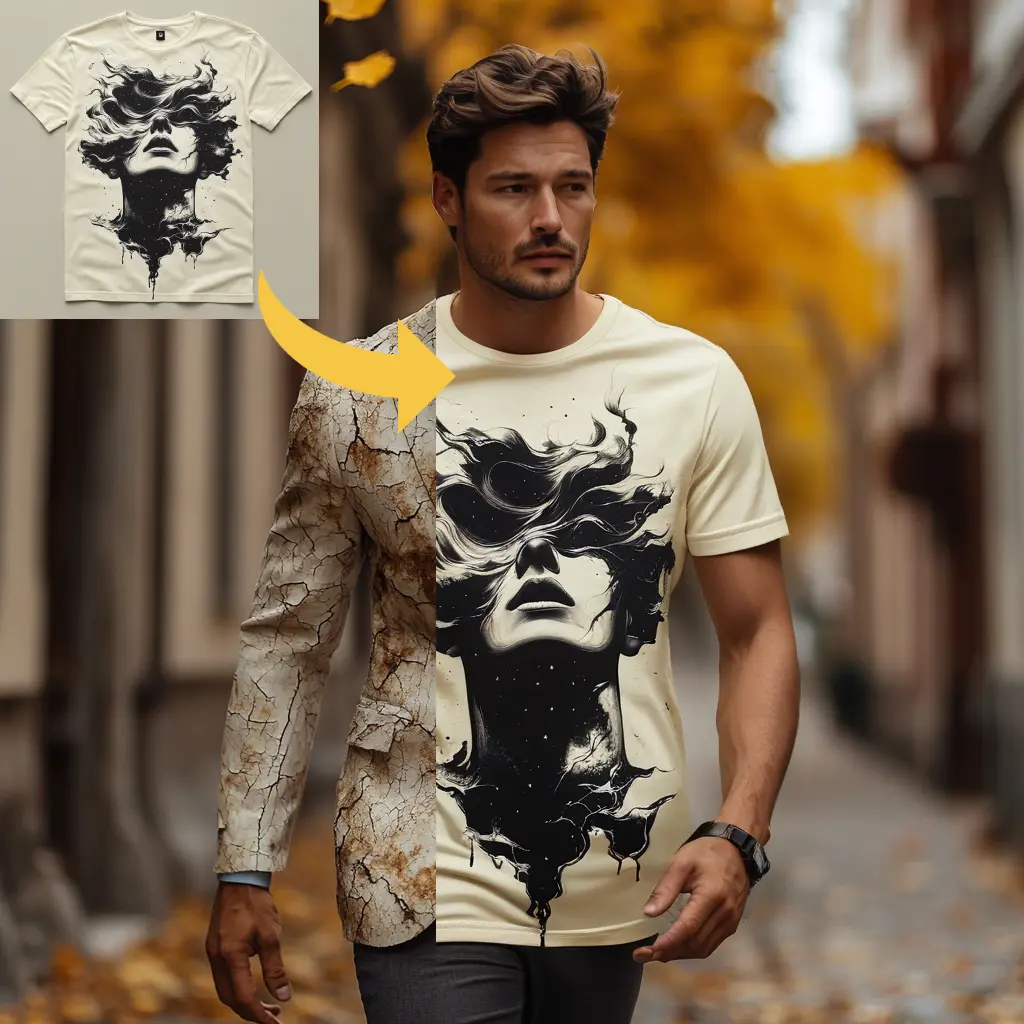ComfyUI Node: MimicMotion GetPoses
MimicMotionGetPoses
CategoryMimicMotionWrapper
kijai (Account age: 2467days) Extension
ComfyUI-MimicMotionWrapper Latest Updated
2025-01-12 Github Stars
0.46K
How to Install ComfyUI-MimicMotionWrapper
Install this extension via the ComfyUI Manager by searching for ComfyUI-MimicMotionWrapper- 1. Click the Manager button in the main menu
- 2. Select Custom Nodes Manager button
- 3. Enter ComfyUI-MimicMotionWrapper in the search bar
Visit ComfyUI Online for ready-to-use ComfyUI environment
- Free trial available
- 16GB VRAM to 80GB VRAM GPU machines
- 400+ preloaded models/nodes
- Freedom to upload custom models/nodes
- 200+ ready-to-run workflows
- 100% private workspace with up to 200GB storage
- Dedicated Support
MimicMotion GetPoses Description
Extract and process human poses from images or video frames using advanced pose detection models for realistic motion integration in creative projects.
MimicMotion GetPoses:
MimicMotionGetPoses is a powerful node designed to extract and process human poses from images or video frames. This node leverages advanced pose detection models to identify and rescale keypoints of human bodies, faces, and hands, making it an essential tool for AI artists who want to incorporate realistic human motion into their projects. By using this node, you can seamlessly integrate human poses into your animations or visual effects, ensuring that the movements are natural and accurately scaled. The node processes input images, detects poses, and resizes them according to reference images, providing a consistent and high-quality output that can be used in various creative applications.
MimicMotion GetPoses Input Parameters:
mimic_pipeline
This parameter represents the pipeline used for processing the mimic motion. It is essential for defining the sequence of operations that will be applied to the input images to extract and rescale the poses. The pipeline ensures that the processing steps are executed in the correct order, leading to accurate and consistent results.
ref_image
The reference image is a crucial input that provides a baseline for rescaling the detected poses. This image should contain a clear and well-defined human pose that will be used to adjust the scale of the poses detected in the input images. The reference image helps maintain consistency in the size and proportions of the detected poses across different frames.
pose_images
This parameter consists of the images or video frames from which the human poses will be detected. The input images should be in a format that the node can process, typically as numpy arrays. The quality and resolution of these images can impact the accuracy of the pose detection, so it is recommended to use high-quality images for the best results.
cfg_min
This parameter defines the minimum configuration settings for the pose detection process. It helps in fine-tuning the detection algorithm to ensure that it captures the essential keypoints without being too sensitive to noise or irrelevant details. Adjusting this parameter can improve the accuracy of the detected poses.
cfg_max
Similar to cfg_min, this parameter sets the maximum configuration settings for the pose detection process. It helps in controlling the upper limits of the detection algorithm, ensuring that it does not miss any critical keypoints. Properly configuring this parameter can enhance the robustness of the pose detection.
steps
The number of steps determines the granularity of the pose detection process. More steps can lead to more detailed and accurate pose detection, but it may also increase the processing time. Balancing the number of steps with the desired level of detail and processing efficiency is key to optimizing the node's performance.
seed
The seed parameter is used for initializing the random number generator, ensuring that the pose detection process is reproducible. By setting a specific seed value, you can achieve consistent results across different runs of the node, which is particularly useful for debugging and fine-tuning the detection process.
noise_aug_strength
This parameter controls the strength of noise augmentation applied to the input images. Noise augmentation can help improve the robustness of the pose detection algorithm by simulating various real-world conditions. Adjusting this parameter allows you to find the right balance between noise robustness and detection accuracy.
fps
Frames per second (fps) is a parameter that defines the frame rate for processing video input. It determines how many frames will be processed per second, impacting the smoothness and continuity of the detected poses in video sequences. Setting an appropriate fps value is crucial for achieving realistic motion in animations.
keep_model_loaded
This boolean parameter indicates whether the pose detection model should remain loaded in memory after processing. Keeping the model loaded can speed up subsequent processing tasks, but it may also consume more memory. This parameter helps manage the trade-off between processing speed and memory usage.
context_size
Context size defines the amount of surrounding context considered during the pose detection process. A larger context size can improve the accuracy of the detected poses by providing more information about the surrounding environment, but it may also increase the processing time.
context_overlap
This parameter specifies the overlap between consecutive context windows during the pose detection process. Overlapping context windows can help capture continuous motion more accurately, ensuring smooth transitions between frames. Adjusting this parameter can enhance the quality of the detected poses in video sequences.
optional_scheduler
The optional scheduler parameter allows you to specify a custom scheduler for the pose detection process. A scheduler can help manage the execution of different processing tasks, optimizing the overall performance of the node. This parameter is optional and can be left unset if not needed.
pose_strength
Pose strength controls the influence of the detected poses on the final output. A higher pose strength value will make the detected poses more prominent, while a lower value will blend them more subtly with the input images. Adjusting this parameter allows you to achieve the desired level of emphasis on the detected poses.
image_embed_strength
This parameter determines the strength of the image embedding applied to the detected poses. Image embedding helps integrate the detected poses more naturally into the input images, ensuring a seamless and realistic appearance. Adjusting this parameter can enhance the visual quality of the final output.
pose_start_percent
Pose start percent defines the starting point of the pose detection process as a percentage of the total input sequence. This parameter allows you to focus the detection on a specific portion of the input, which can be useful for processing only the relevant sections of a video or image sequence.
pose_end_percent
Similar to pose start percent, this parameter defines the ending point of the pose detection process as a percentage of the total input sequence. It helps in limiting the detection to a specific portion of the input, ensuring that only the relevant sections are processed.
MimicMotion GetPoses Output Parameters:
output_tensor
The output tensor is a multi-dimensional array that contains the processed poses in a format suitable for further use in animations or visual effects. This tensor includes the rescaled keypoints of human bodies, faces, and hands, ensuring that the detected poses are accurately represented and ready for integration into your projects.
output_tensor[1:]
This parameter represents the subsequent frames or images in the output tensor, excluding the reference pose. It provides the processed poses for each input frame, allowing you to create smooth and continuous animations or visual effects based on the detected human poses.
MimicMotion GetPoses Usage Tips:
- Ensure that the reference image contains a clear and well-defined human pose to achieve accurate rescaling of the detected poses.
- Adjust the cfg_min and cfg_max parameters to fine-tune the pose detection algorithm for your specific use case, balancing sensitivity and robustness.
- Use high-quality input images or video frames to improve the accuracy of the pose detection process.
- Experiment with the noise_aug_strength parameter to enhance the robustness of the pose detection algorithm under various real-world conditions.
- Set an appropriate fps value to achieve smooth and realistic motion in video sequences.
MimicMotion GetPoses Common Errors and Solutions:
"Model loading failed"
- Explanation: This error occurs when the pose detection model cannot be loaded from the specified path.
- Solution: Ensure that the model files are located in the correct directory and that the paths provided are accurate. Verify that the model files are not corrupted.
"Invalid input image format"
- Explanation: This error indicates that the input images are not in the expected format.
- Solution: Ensure that the input images are provided as numpy arrays and that they have the correct dimensions and data types.
"Pose detection failed"
- Explanation: This error occurs when the pose detection algorithm cannot identify any poses in the input images.
- Solution: Check the quality and resolution of the input images. Ensure that the images contain clear and well-defined human poses. Adjust the cfg_min and cfg_max parameters to improve the detection sensitivity.
"Insufficient memory"
- Explanation: This error indicates that there is not enough memory available to process the input images.
- Solution: Reduce the size of the input images or decrease the context size parameter. Consider processing the images in smaller batches to manage memory usage more effectively.
MimicMotion GetPoses Related Nodes
RunComfy is the premier ComfyUI platform, offering ComfyUI online environment and services, along with ComfyUI workflows featuring stunning visuals. RunComfy also provides AI Playground, enabling artists to harness the latest AI tools to create incredible art.



